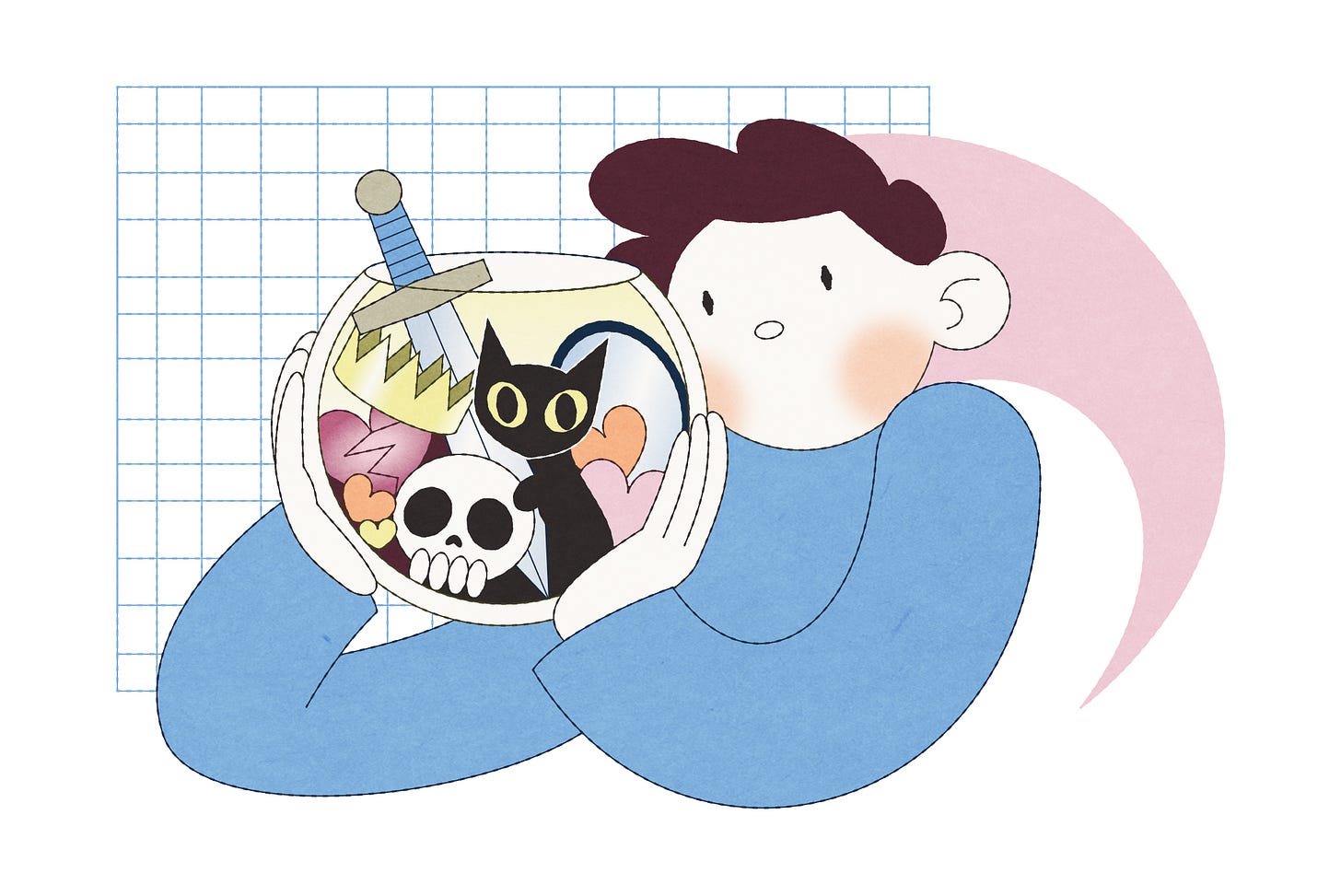The Truth About Tropes That Literary Culture Won't Tell You
How to Use (and Adapt) Tropes to Shape Your Story with Amy Shearn

This lesson is part of The World-building Collection with Amy Shearn — check out all the workshops HERE to learn what ALL writers can borrow from speculative fiction to craft vivid and memorable fictional worlds.
Tropes Are Just Storytelling Patterns
When I was getting my MFA in fiction writing, “trope” was basically a dirty word. If someone pointed out a trope in your work, you hung your head in shame, knowing they were saying you were being unoriginal, or falling back on cliches rather than fresh, original language and ideas. I have to admit, it took me a few years to stop clutching my pearls (cliche intended, tyvm) when I learned that booktokers and other readers of genre fiction, especially romance and romantasy, called out books’ tropes on purpose – that bookstores like the Ripped Bodice actually shelved books by trope. What? Is that… allowed?!
The cynical part of me sees this as an algorthimizing of literature, and worries it could have the same flattening effect that dating apps and social media can have – encouraging us to stay in bubbles, to seek only what we already know we like, nulling the possibility of a synchronicity-fueled meet-cute in an overstuffed used bookstore (this goes for both books and people). Judging a book by its marketing trend or potential hashtag is not my ideal relationship with literature.
And/but! Another more open-minded part of me sees this as a useful tool for writers. What can we glean from the fact that some romantasy readers, for example, like to pick their books based on trope – from friends-to-lovers (with dragons), to second-chance romance (with demons)? Well, for one thing, readers are consumers, and like consumers of anything, want to know a little something about what they’re about to devote their money and time to. As Shelbi Polk writes in Shondaland, “Essentially, a trope is a pattern that writers use to set up a reader’s expectations and either fulfill or subvert them.”
In other words, just because you use a trope, doesn’t mean you have to follow it exactly, or write a formulaic book. But a pattern you can use to shape your story? That sounds pretty freaking helpful to me – for both readers and for writers.
The Intricate Possibilities of Popular Tropes
Take, for example, the “enemies to lovers” trope. This popular trope is big in romantasy books like The Cruel Prince by Holly Black and R.F.Kuang’s The Poppy War series. In these kinds of stories, the enemies are often literally physically fighting each other – stakes are high in these novels, and conflicts are often extremely external. But look, plenty of other kinds of novels – including quieter, literary books that are more character-driven / less plot-driven than these romantasy epics – have used the “enemies to lovers” trope. Hello, Pride and Prejudice? Jane Eyre? Anne of Green Gables?
Another trope I legitimately adore is “forbidden love.” If we think about plots as often being driven by characters’ secret desires and fears, well, a forbidden love can basically set the whole thing into play. Writing this, I peeked at the current paperback bestsellers list, and while I haven’t read all of these books, from the descriptions I gather that three-fourths of them involve some kind of forbidden romance – several in the context of a romance or horror story.
A forbidden romance is always going to be inherently dramatic, but that doesn’t mean it has to be soapy or bodice-ripper-y. Let’s take a look at E. Annie Proulx’s now-classic short story, Brokeback Mountain, for example.
Keep reading with a 7-day free trial
Subscribe to The Forever Workshop to keep reading this post and get 7 days of free access to the full post archives.

